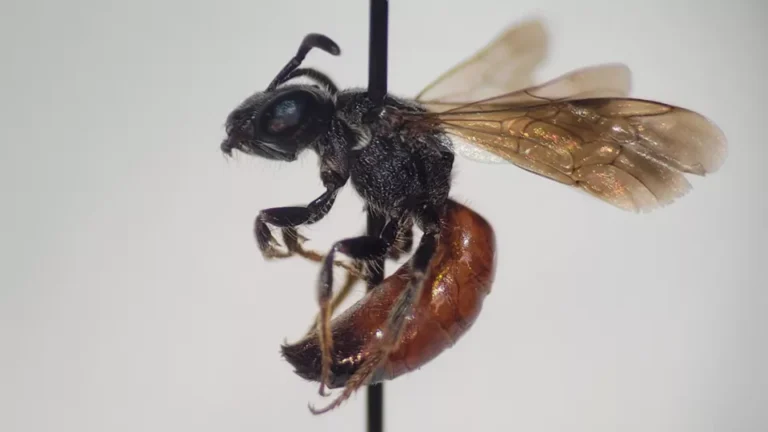During fieldwork in Sweden, a blood bee of the species Sphecodes cristatus was spotted. This species was considered extinct in Sweden. The discovery was made by the ULUND team, which is investigating how government-funded restoration efforts affect the most endangered bee species in Sweden.
Sphecodes cristatus occur scarcely in various locations in Europe and Asia. In Sweden, this bee had not been observed since 1991 despite intensive searching and was considered nationally extinct. It is a parasitic solitary bee belonging to the blood bees, recognizable by its blood red abdomen. This bee species thrives in large sandy areas where vegetation varies from non-existent to blooming.

(Photographer: Michael Tholin)
Parasitic
Sphecodes cristatus is parasitic and thus relies on other bee species, which in turn depend on its pollen plants and blooming flowers for nectar. Because it is parasitic, it doesn’t collect pollen itself but relies on the host bee species to collect pollen and then, like the cuckoo bird, lays its egg on the host bee species’ pollen in the nest.
Location
The research team spotted the bee in Blekinge, near Ronneby Airport. This is not a surprising location, as military activities and restoration actions both disturb the environment to make it suitable for the bee species. It could be imagined that large machines in the nearby areas act like the ancient forest elephants that once roamed Sweden, uprooting grass, trampling the ground, and felling trees. This creates conditions for a rich biodiversity in the sandy grasslands.
Research
The ULUND team that spotted the bee is investigating how government-funded restoration efforts affect the most endangered bee species in Sweden. The restoration measures included deep digging and other forms of ground disturbance. This involves uprooting vegetation, bringing up calcareous sand and exposing sandy surfaces, which creates favorable conditions for S. cristatus, its host bee species and associated pollen plants.
In short, the rediscovery of the bee is likely linked to the long-term and varying disturbances from the military combined with restoration efforts in the surrounding area. Continuous disturbances that create a warm and varied habitat are beneficial for these bees.
Excitement
The rediscovery highlights how important it is to protect and restore habitats, even if you do not know which endangered species may be present at a location, as the species can suddenly be discovered. It is encouraging to find rare and endangered species, because it means that it is not too late for habitat restoration.

To be continued
Because we now know that a species has not completely gone extinct, there is still a chance to restore its habitats, making the populations viable in the long-term. This discovery shows how vital it is to continue conservation efforts, as species may survive unnoticed for decades. By protecting and restoring habitats, we can support not only this bee but also other endangered species. This gives the sense that it is not too late to shift development in a more positive direction for biodiversity.

